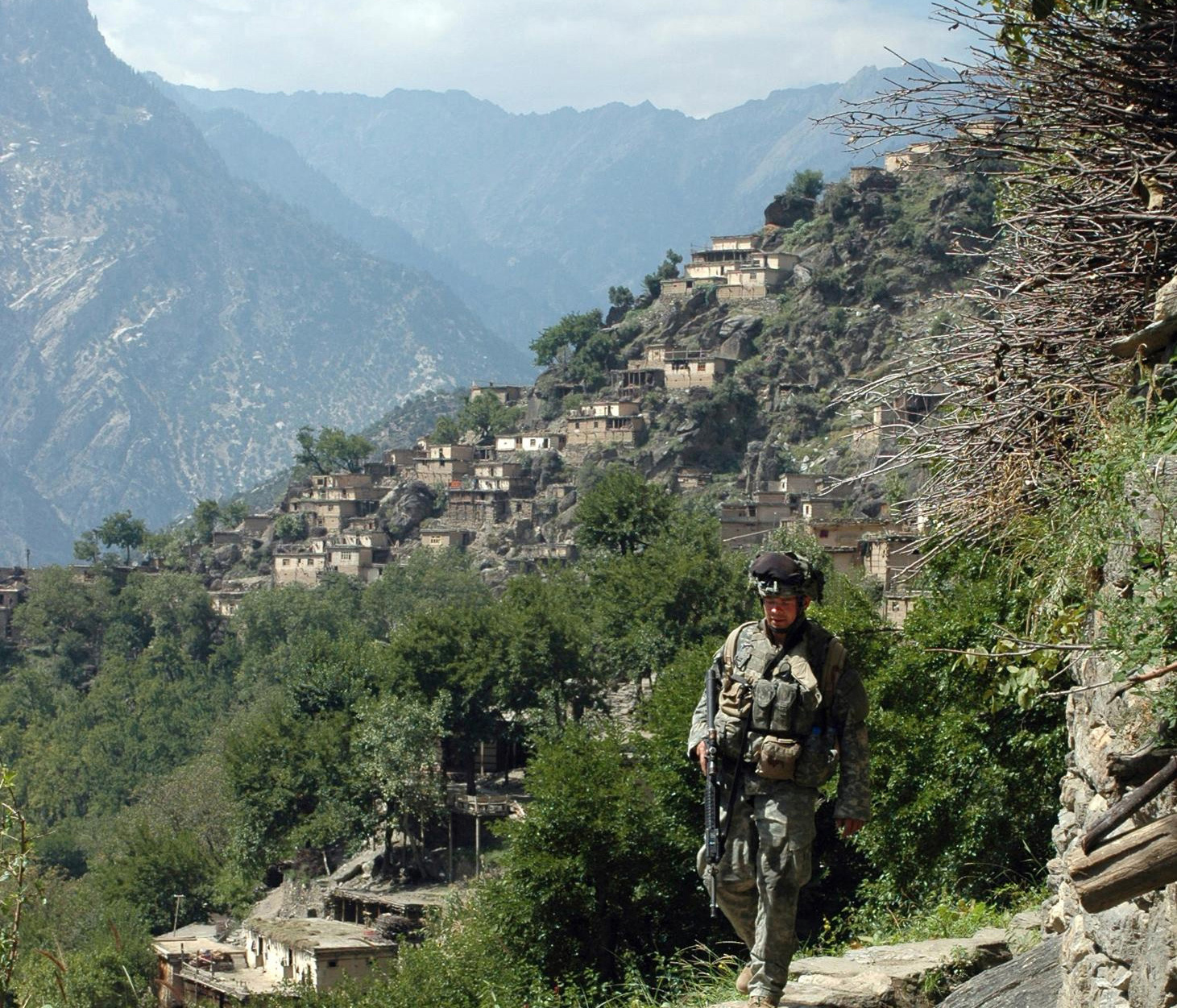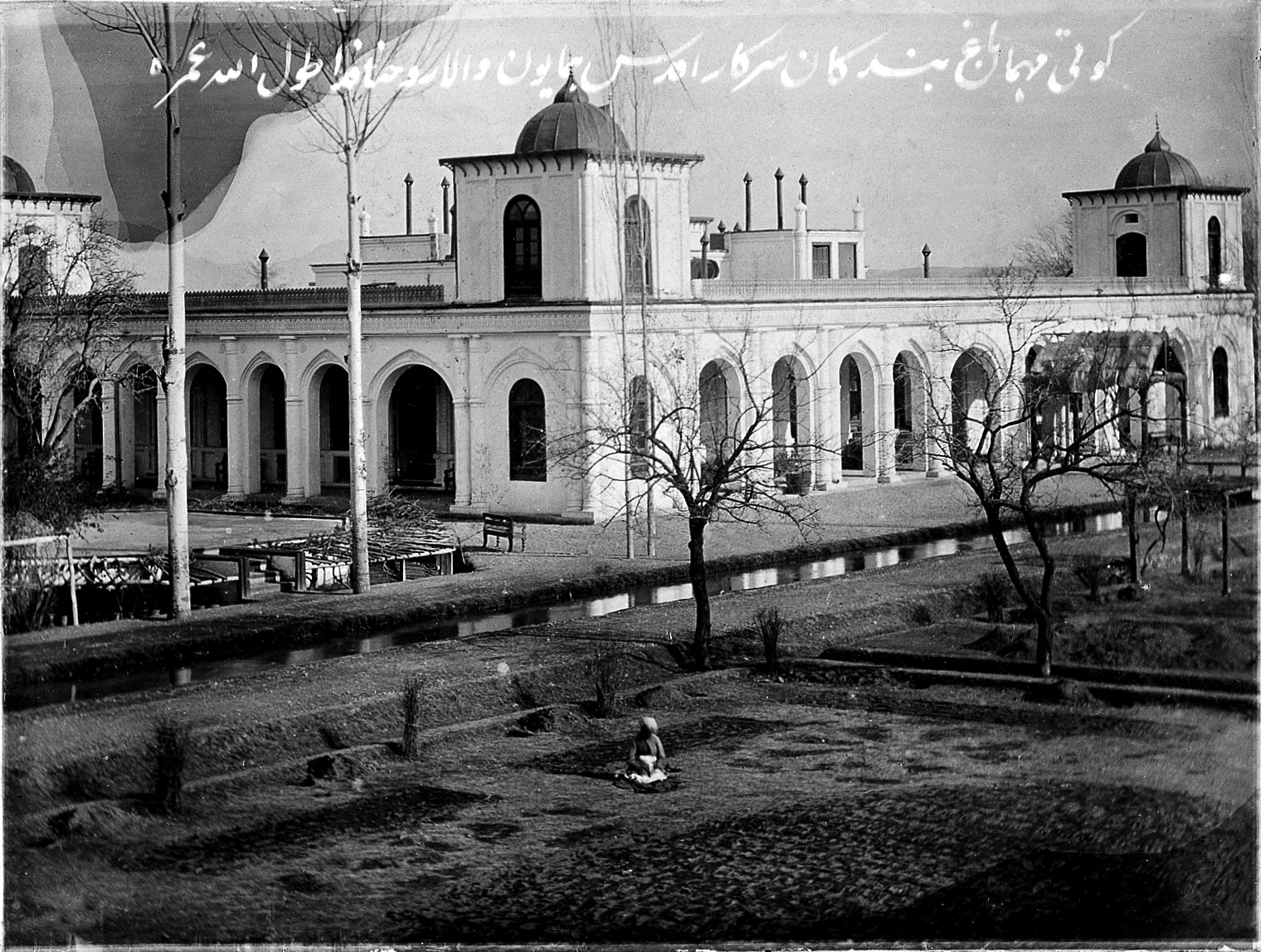|
Ashkun
The Nuristanis, formerly known as Kafiristanis, are an ethnic group native to the Nuristan Province of northeastern Afghanistan and Chitral District of northwestern Pakistan. Their languages comprise the Nuristani branch of Indo-Iranian languages. The Nuristanis reside mainly in the northeast of Afghanistan and northwest of Pakistan; between the Pashtun tribes of Kunar, Kalash in Pakistan's Chitral, and Tajiks of Badakhshan in the north. In the mid-1890s, after the establishment of the Durand Line when Afghanistan reached an agreement on various frontier areas to the British Empire for period of time, Emir Abdur Rahman Khan conducted a military campaign in Kafiristan and followed up his conquest with forced conversion of the Kafirs to Islam; the region thenceforth being known as ''Nuristan'', the "Land of Light". Before their conversion, the Nuristanis practiced a form of ancient Hinduism. Non-Muslim religious practices endure in Nuristan today to some degree as folk customs. ... [...More Info...] [...Related Items...] OR: [Wikipedia] [Google] [Baidu] |
Pashayi People
Pashayi or Pashai ( Pashayi: پشهای) are an Indo-Aryan ethnolinguistic group living primarily in eastern Afghanistan. They are mainly concentrated in the northern parts of Laghman and Nangarhar, also parts of Kunar, Kapisa, Parwan, Nuristan, and a bit of Panjshir. Many Pashai consider themselves as Pashtuns speaking a special language, and many are bilingual in Pashto. History The Pashayi people historically practiced ancient Hinduism and Buddhism, along with tribal religions. Pashayis and Nuristanis were native to Kunar and Laghman valleys near Jalalabad in the north-east Afghanistan, until they were displaced to less fertile mountainous region by successive waves of immigration by Ghilji Pashtuns. In the 13th century, Marco Polo traveled through the region and described the locals as practitioners of sorcery and witchcraft. Polo claimed that the men wore brooches and earrings decorated with gemstones and that the main diet of the locals consisted of rice and meat. ... [...More Info...] [...Related Items...] OR: [Wikipedia] [Google] [Baidu] |
Nuristan Province
Nuristan, also spelled as Nurestan or Nooristan (Dari: ; Kamkata-vari: ), is one of the 34 provinces of Afghanistan, located in the eastern part of the country. It is divided into seven districts and is Afghanistan's least populous province, with a population of around 167,000. Parun serves as the provincial capital. Nuristan is bordered on the south by Laghman and Kunar provinces, on the north by Badakhshan province, on the west by Panjshir province. The origins of the Nuristani people traces back to the 4th century BC. Some Nuristanis claim being descendants of the Greek occupying forces of Alexander the Great. It was formerly called Kafiristan ( ps, ) ("Land of the Infidels") until the inhabitants were forcibly converted from an animist religion; a form of ancient Hinduism infused with local variations, to Islam in 1895, and thence the region has become known as Nuristan ("land of illumination", or "land of light"). The region was located in an area surrounded by Buddhist ... [...More Info...] [...Related Items...] OR: [Wikipedia] [Google] [Baidu] |
Kunar Province
Kunar (Pashto: ; Dari: ) is one of the 34 provinces of Afghanistan, located in the northeastern part of the country. Its capital is Asadabad. Its population is estimated to be 508,224. Kunar's major political groups include Wahhabis or Ahl-e- Hadith, ''Nazhat-e Hambastagi Milli, Hezb-e Afghanistan Naween, Hezb-e Islami Gulbuddin''. It is one of the four " N2KL" provinces ( Nangarhar Province, Nuristan Province, Kunar Province and Laghman Province). N2KL was the designation used by the US and Coalition Forces in Afghanistan for the rugged region along the Afghanistan–Pakistan border opposite Pakistan's Federally Administered Tribal Areas (merged in 2018 with Khyber Pakhtunkhwa). Kunar is the center of the N2KL region. Kunar was the birthplace of Sayyed Jamaluddin Afghani (al-Afghani), who was an influential Muslim scholar and philosopher. Geography Kunar province is located in the northeast of Afghanistan. It borders with Nangarhar Province to the south, Nuristan Province ... [...More Info...] [...Related Items...] OR: [Wikipedia] [Google] [Baidu] |
Nuristani Languages
The Nuristani languages, formerly known as Kafiri languages, are one of the three groups within the Indo-Iranian language family, alongside the much larger Indo-Aryan and Iranian groups. They have approximately 130,000 speakers primarily in eastern Afghanistan and a few adjacent valleys in Khyber Pakhtunkhwa's Chitral District, Pakistan. The region inhabited by the Nuristanis is located in the southern Hindu Kush mountains, and is drained by the Alingar River in the west, the Pech River in the center, and the Landai Sin and Kunar rivers in the east. The languages were previously often grouped with Indo-Aryan ( Dardic sub-group) or Iranian until they were finally classified as forming a third branch in Indo-Iranian. Languages * Northern: ** Kamkata-vari (Bashgali, includes the dialects Kata-vari, Kamviri, Shekhani and Mumviri) 40,000 speakers ** Wasi-wari (Prasuni) 8,000 speakers * Southern: ** Askunu (Ashkun) 40,000 speakers ** Waigali (Kalasha-ala) 12,000 speakers ** Tr ... [...More Info...] [...Related Items...] OR: [Wikipedia] [Google] [Baidu] |
Kalash People
The Kalasha (Kalasha: کالؕاشؕا, romanised: ''Kaḷaṣa)'', or Kalash, are an Indo-Aryan indigenous people residing in the Chitral District of Khyber-Pakhtunkhwa province of Pakistan. The Kalash population in Pakistan numbers only in a few thousands, making them one of the smallest ethnic minorities in Pakistan. They are considered unique among the people of Pakistan.The kalaṣa of kalaṣüm They are also considered to be Pakistan's smallest , and tr ... [...More Info...] [...Related Items...] OR: [Wikipedia] [Google] [Baidu] |
Kabul
Kabul (; ps, , ; , ) is the capital and largest city of Afghanistan. Located in the eastern half of the country, it is also a municipality, forming part of the Kabul Province; it is administratively divided into 22 municipal districts. According to late 2022 estimates, the population of Kabul was 13.5 million people. In contemporary times, the city has served as Afghanistan's political, cultural, and economical centre, and rapid urbanisation has made Kabul the 75th-largest city in the world and the country's primate city. The modern-day city of Kabul is located high up in a narrow valley between the Hindu Kush, and is bounded by the Kabul River. At an elevation of , it is one of the highest capital cities in the world. Kabul is said to be over 3,500 years old, mentioned since at least the time of the Achaemenid Persian Empire. Located at a crossroads in Asia—roughly halfway between Istanbul, Turkey, in the west and Hanoi, Vietnam, in the east—it is situated in a stra ... [...More Info...] [...Related Items...] OR: [Wikipedia] [Google] [Baidu] |
Emir
Emir (; ar, أمير ' ), sometimes transliterated amir, amier, or ameer, is a word of Arabic origin that can refer to a male monarch, aristocrat, holder of high-ranking military or political office, or other person possessing actual or ceremonial authority. The title has a long history of use in the Arab World, East Africa, West Africa, Central Asia, and the Indian subcontinent. In the modern era, when used as a formal monarchical title, it is roughly synonymous with "prince", applicable both to a son of a hereditary monarch, and to a reigning monarch of a sovereign principality, namely an emirate. The feminine form is emira ( '), a cognate for "princess". Prior to its use as a monarchical title, the term "emir" was historically used to denote a "commander", "general", or "leader" (for example, Amir al-Mu'min). In contemporary usage, "emir" is also sometimes used as either an honorary or formal title for the head of an Islamic, or Arab (regardless of religion) organisation ... [...More Info...] [...Related Items...] OR: [Wikipedia] [Google] [Baidu] |
Abdur Rahman Khan
Abdur Rahman Khan GCSI (Pashto/Dari: ) (between 1840 and 1844 – 1 October 1901) was Emir of Afghanistan from 1880 to his death in 1901. He is known for uniting the country after years of internal fighting and negotiation of the Durand Line Agreement with British India. Abdur Rahman Khan was the first child and only son of Mohammad Afzal Khan, and grandson of Dost Mohammad Khan, founder of the Barakzai dynasty. Abdur Rahman Khan re-established the writ of the Afghan government after the disarray that followed the second Anglo-Afghan war. He became known as ''The Iron Amir'' because his government was a military despotism. This despotism rested upon a well-appointed army and was administered through officials subservient to an inflexible will and controlled by a widespread system of espionage. The nickname, ''The Iron Amir'', is also associated due to his victory over a number of rebellions by various tribes who were led by his relatives. One source says that during his reign t ... [...More Info...] [...Related Items...] OR: [Wikipedia] [Google] [Baidu] |
Historical Vedic Religion
The historical Vedic religion (also known as Vedicism, Vedism or ancient Hinduism and subsequently Brahmanism (also spelled as Brahminism)), constituted the religious ideas and practices among some Indo-Aryan peoples of northwest Indian Subcontinent (Punjab and the western Ganges plain) during the Vedic period (1500–500 BCE). These ideas and practices are found in the Vedic texts, and some Vedic rituals are still practiced today. It is one of the major traditions which shaped Hinduism, though present-day Hinduism is markedly different from the historical Vedic religion. The Vedic religion developed in the northwestern region of the Indian subcontinent during the early Vedic period (1500–1100 BCE), but has roots in the Eurasian Steppe Sintashta culture (2200–1800 BCE), the subsequent Central Asian Andronovo culture (2000–900 BCE), and the Indus Valley civilization (2600–1900 BCE). It was a composite of the religion of the Central Asian Indo-Aryans, itself "a syncreti ... [...More Info...] [...Related Items...] OR: [Wikipedia] [Google] [Baidu] |
Singing Of Kati Hymns
Singing is the act of creating musical sounds with the voice. A person who sings is called a singer, artist or vocalist (in jazz and/or popular music). Singers perform music (arias, recitatives, songs, etc.) that can be sung with or without accompaniment by musical instruments. Singing is often done in an ensemble of musicians, such as a choir. Singers may perform as soloists or accompanied by anything from a single instrument (as in art song or some jazz styles) up to a symphony orchestra or big band. Different singing styles include art music such as opera and Chinese opera, Indian music, Japanese music, and religious music styles such as gospel, traditional music styles, world music, jazz, blues, ghazal, and popular music styles such as pop music, pop, rock music, rock, and electronic dance music. Singing can be formal or informal, arranged, or improvised. It may be done as a form of religious devotion, as a hobby, as a source of pleasure, comfort, or ritual as part of mu ... [...More Info...] [...Related Items...] OR: [Wikipedia] [Google] [Baidu] |
Kati Sacrifice To God Imra
KATI (94.3 FM), branded as 94.3 KAT Country, is a radio station which broadcasts country music and St. Louis Cardinals baseball. Licensed to California, Missouri, the station serves the Jefferson City area and is owned by the Zimmer Radio Group of Mid-Missouri. External links * * * ATI Ati or ATI may refer to: * Ati people, a Negrito ethnic group in the Philippines **Ati language (Philippines), the language spoken by this people group ** Ati-Atihan festival, an annual celebration held in the Philippines *Ati language (China), a ... Radio stations established in 1982 1982 establishments in Missouri {{Missouri-radio-station-stub ... [...More Info...] [...Related Items...] OR: [Wikipedia] [Google] [Baidu] |


.gif)


.jpg)

.png)
.jpg)